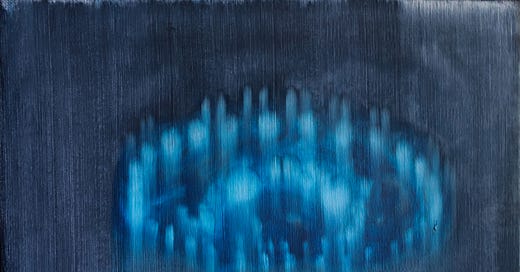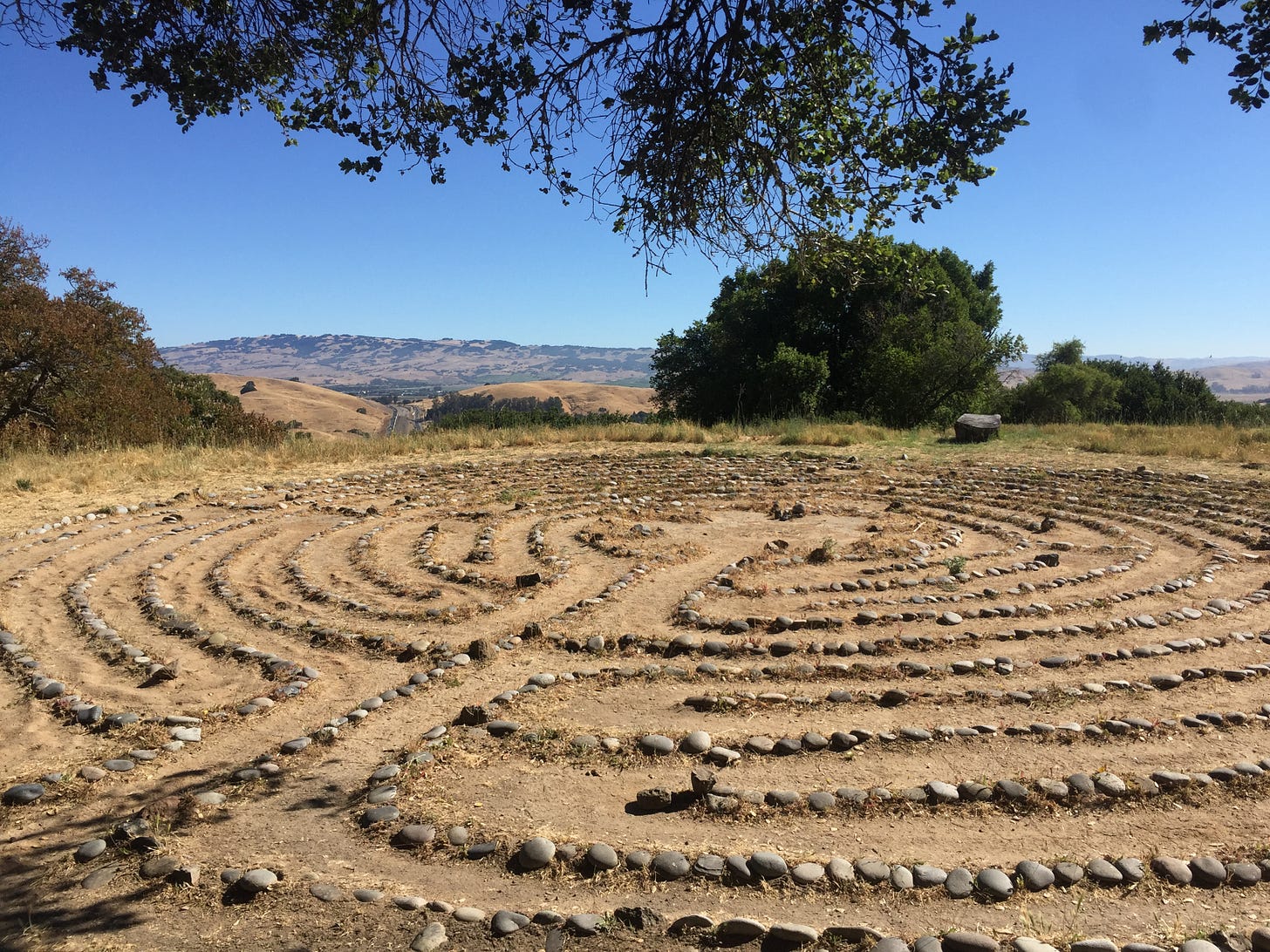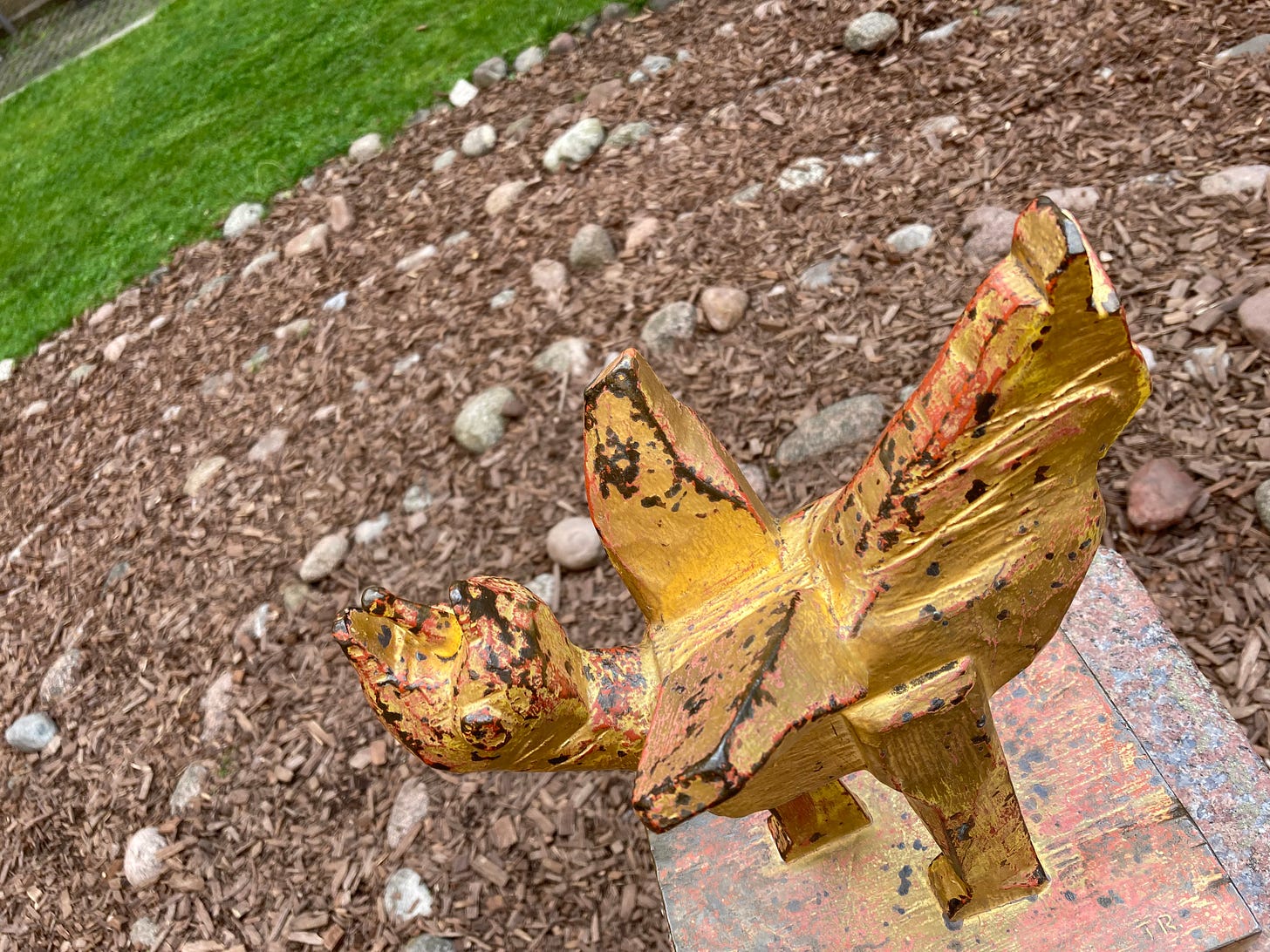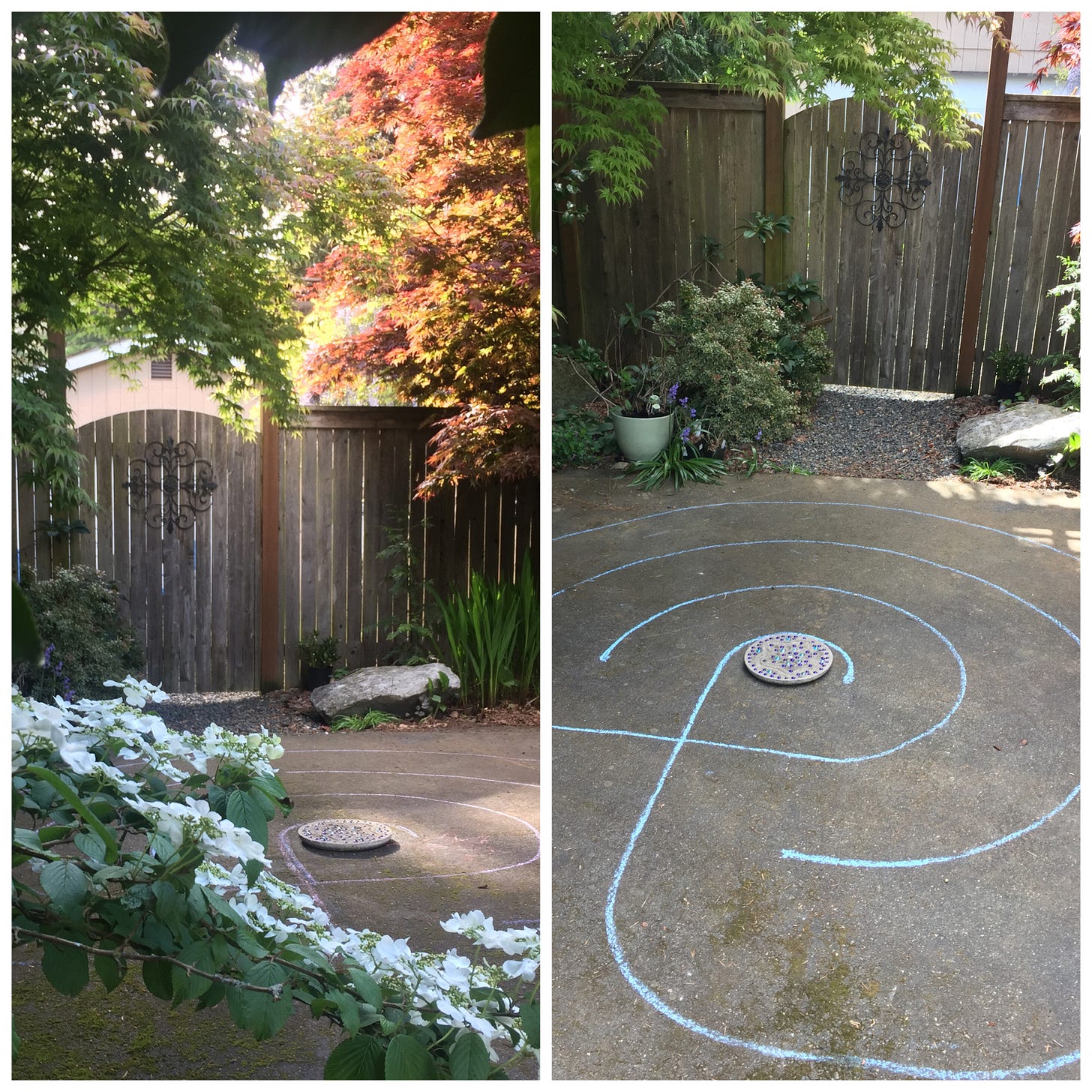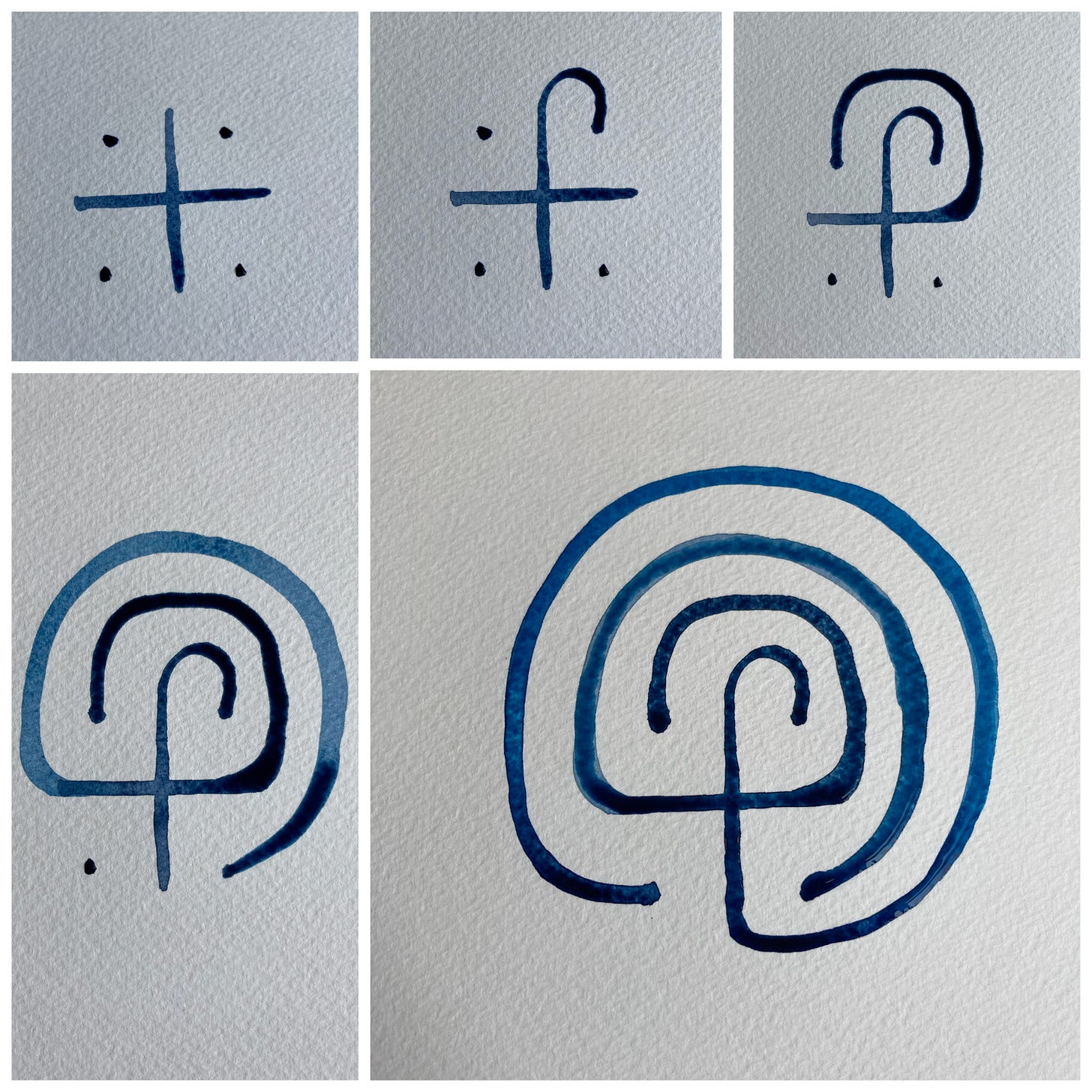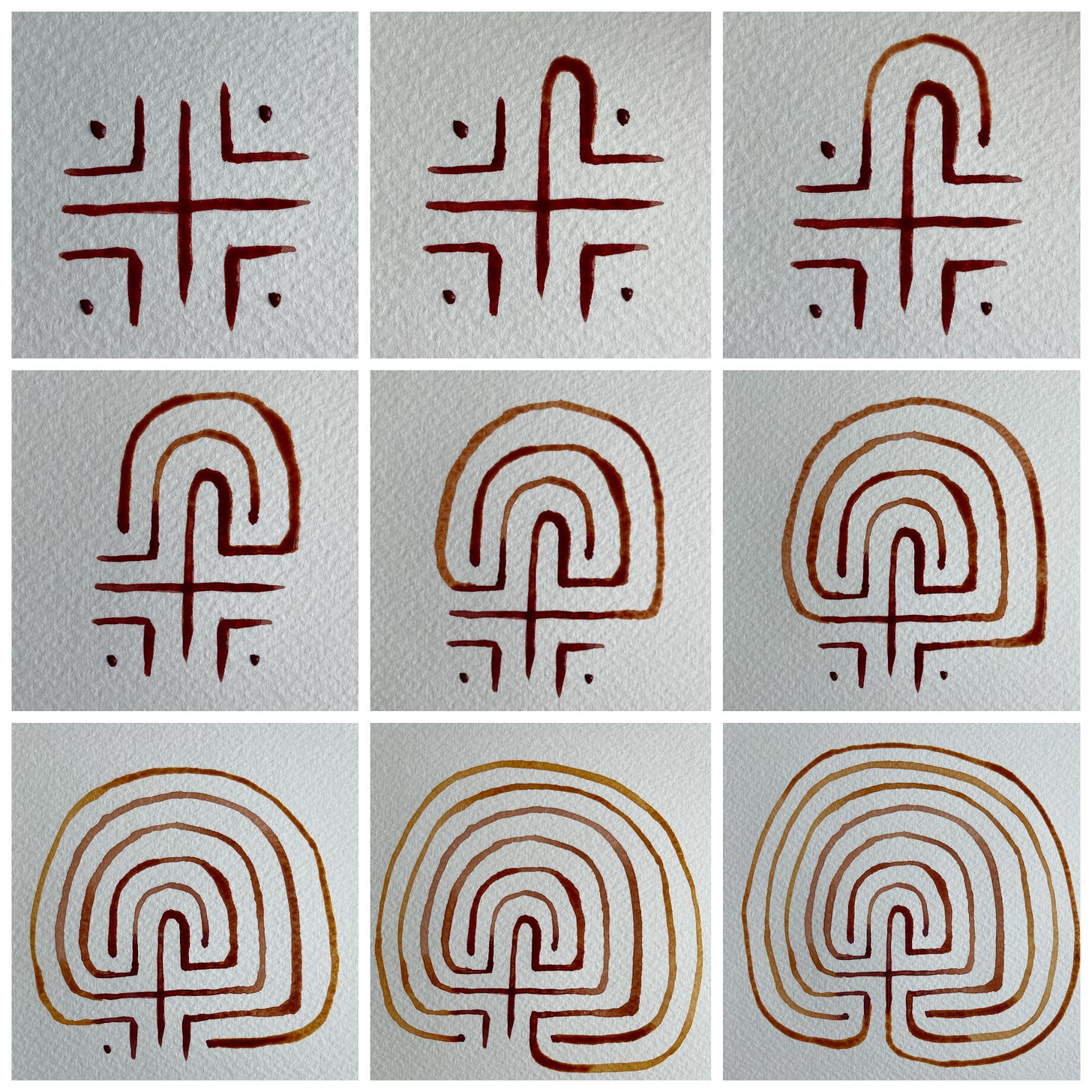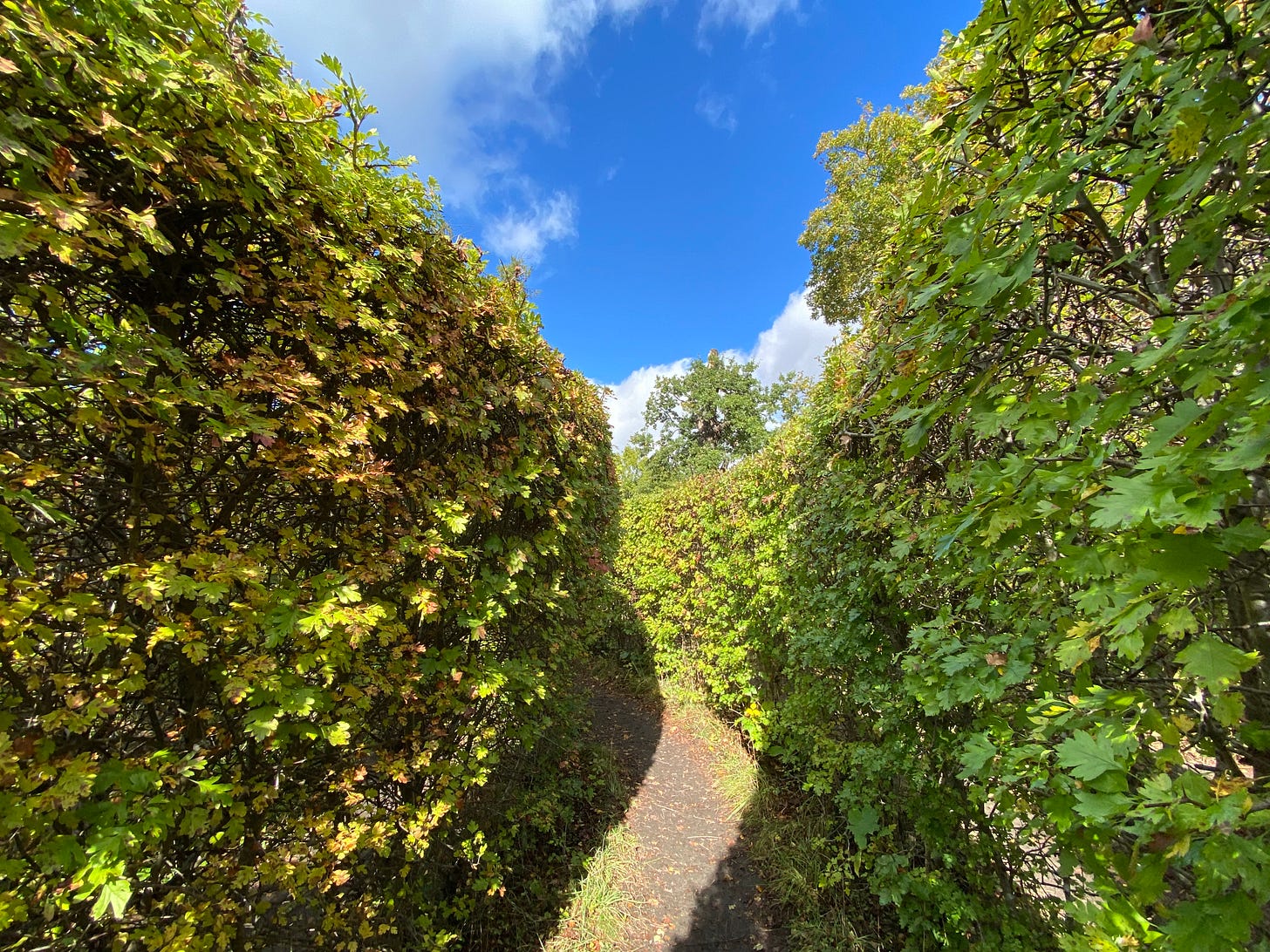If you are a regular or if you have landed on Tarantula: Authors and Art for the very first time, get ready to enjoy a little creative stretch! Our contributor, Karen Grace, an art teacher and historian, will take you through a little history lesson and a painting activity - we hope you’ll give it a try. If a friend forwarded you this article, welcome; if you like it, share it or why not subscribe?
Rūta Matulevičiūtė’s beautiful blue paintings summon up a world of fairy tales and mystery that feels just right for a September, poised on the edge of fall. What is it about the changing of the seasons, especially from Summer to Autumn, that makes us yearn for stories? Is it the darkness? The need to be indoors and warm, seeking companionship and light? For us this year, the shift from lighter days to darkness here in Stockholm is particularly dramatic. It seems our switch to fall was flipped on August 28th as the weather turned decidedly windy, gray, and rainy. There were signs all along – the everglow of Nordic summer sun started to fade in mid-August and was replaced by a dark night sky filled with stars!
Now that we are approaching the equinox the seasonal shift is certain and feels like serious business: the candles have come out of hiding and adorn every table here. The birds arc southward. The leaves explode with new color and will soon twirl their way to the ground. To help enjoy this week’s Autumnal Equinox, this moment of celestial balance amidst so much movement and change, I offer you a chance to make a winding journey of your own through the story of the labyrinth , and a practical guide to walking the spiral path yourself.
I encountered my first labyrinth on a walk in the Pacific Northwest woods more than 20 years ago. It was nothing fancy really - someone had drawn it with chalk on the ground – but it felt like I had stumbled upon a little bit of actual magic. As if the fae folk had left it just for me. I remember looking around – wondering if it was ok even to step inside – like it belonged to someone else. It also felt a little like I was being drawn into a web. Was something waiting to pounce? I wasn’t quite sure what to do, but step by step, I followed the path to the center, turned around and walked carefully back out again. Simple enough really but I was completely enchanted by the experience. Any prior exposure to mazes or labyrinths had been as child’s play. Mazes are included in the American lexicon of fall-ish things, along with pumpkins and apple cider, but they are usually made of corn or hay bales and are meant for fun and frolic – not soulful contemplation. This experience was different – transcendent even. Perhaps it was the total focus on each footfall, an impromptu walking meditation, or maybe it was the time spent in the company of trees – ancient Douglas firs, hemlocks, and red cedars – that felt suddenly like a sanctuary. So I began a quest to experience more labyrinths (I seek them out everywhere I go) and to learn more about them.
The most famous story of a labyrinth is that of Ariadne and the Minotaur and of course it was her magical red thread that offered safe passage to the center and out again. The symbol of that labyrinth appeared on coins from Knossos, but also on cave walls and rock carvings many years, perhaps thousands of years, earlier. Through history the labyrinth was incorporated as a Christian symbol (of a path to salvation) and so there are examples tiled into the floors and gardens of Medieval monasteries and churches, the most famous at the Cathedral of Chartres in France.
Somewhere along the way I decided I should make sure to walk a labyrinth for the equinoxes and solstices of the year. It just seemed right in my head – a way to connect to the earth beneath my feet and its place in the universe.
It is handy if you can find a community labyrinth near you. Once I walked one that was basically in the front yard of a suburban home (by invitation of course) and once I enjoyed the impossibly picturesque stone labyrinth at the Earthrise Retreat Center in Petaluma, California. They can be tucked away in interesting places, sometimes hidden in plain sight. Often they coexist with churches, museums, or playgrounds. Where I currently live I know of at least four that I can easily walk to. But there were years when I couldn’t find one anywhere, so I learned to make my own.
The process is simple – you can make a labyrinth as small or as large as you’d like using the same exact steps. You can use pencil on paper for a tabletop version that you can “walk” with your fingers or eyes or you can use sidewalk chalk to conjure an enormous one onto your driveway or a quiet parking lot.
You start with a cross and four dots. Then connect the dots working from the center outward.
You can also make a slightly more complicated version starting with a cross, four corners, and four dots. And again, you connect the dots, working from the center out
To make these I used a couple different shades of watercolors. It was extra fun to paint them and once I was done, I could make the color roll around the labyrinth lines too for an interesting effect.
Walking your labyrinth is simple. If you have made a tiny version like mine above, you can use your index finger to slowly trace the path inward, pause at the center, and then outward. It can be nice to pace your path with your breath (inhaling and exhaling at the turns) and enjoying the texture of the paper as you go. With a larger version you can enjoy a walking meditation, placing your full attention on each step from the entrance to the center, and then back out again. Sometimes I take a small token with me, like an acorn, a pretty leaf, a flower, or a stone, to set in the center before I reverse and return to the start. Sometimes I start with a question in mind – something that weighs on me – and I use each step to consider what my answer is when I listen to my heart.
I cannot resist the cyclical nature of a labyrinth... the end is the beginning and the beginning is the end. I hope you enjoy a walk to your center and back out again.

